20 Must-Read Historical Fiction Books Set in Korea
The Korean Wave has exploded in popularity in recent years. It’s evident in K-pop, K-drama, and webtoons, all of which originated in South Korea. The Korean Wave is stronger than ever in many countries, particularly in mine, which is only a few hours away from Seoul. K-pop concerts are held on occasion, and there are even Korean barbecue restaurants on almost every corner (samgyeopsal is to die for). This phenomenon is not going away soon, either. Everything Korean these days seems in high demand, even in various storytelling formats such as comics and books. The boom of K-drama-inspired novels has made it to romance publishing and beyond.
That being said, I have compiled 20 must-read historical fiction books set in Korea. Because this is a list of fiction with a historical bent, the majority of the books are set in medieval Korea, during the Japanese occupation of Korea, and/or during the Korean War. Each book portrays events from different time periods, providing us with new perspectives of our world. We get to discover Korean culture, traditions, and customs from a past long gone. We get to see what life was like in Korea during the wars, what hardships people faced, and what choices they made to survive. These books provide us with a deeper understanding of what Korea truly is, as told by Korean authors, outside of what we hear or see in popular culture.
Here are 20 must-read historical fiction books set in Korea to immerse yourself in the culture:
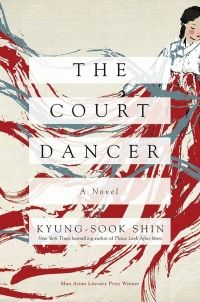 The Court Dancer by Kyung-Sook Shin, translated by Anton HurThe story follows Yi Jin, a court lady to the empress during the Joseon Dynasty in the late 19th century. When a visiting French diplomat sees Yin Jin dance, he falls in love. Then, he asks her hand in marriage and takes her to the comforts of France. But things are not always as they appear: Yin Jin misses home despite living a much more free life in France. So she returns to Korea — but it’s not the homecoming she expects. |
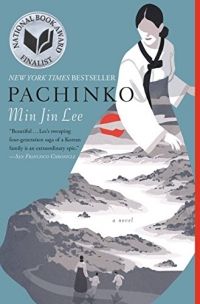 Pachinko by Min Jin LeeThe story, which is set in early 1900s Korea and later in Japan, centers on Sunja’s dalliance with Hansu, a dashing and wealthy man. As she falls in love and becomes pregnant, she learns he’s married and has a family in Japan. Sunja is unable to marry him because, at the time, society disapproved of women who become pregnant before marriage. Rather, she weds a different man, who then takes her to Japan. This saga follows the story of a family from Korea to Japan, spanning many generations. It was adapted as a TV series for Apple TV. |
 The Red Palace by June HurThis young adult fantasy, which takes place in the Joseon Dynasty in 1758, centers on Hyeon, an illegitimate child who eventually makes her way as a palace nurse. There’s a murder mystery involving four women in the palace, making Hyeon worried as her friend and mentor is thought to be involved in the case. To clear her friend’s name, Hyeon makes an investigation herself, which reveals that a police inspector, Eoijin, is also doing the same. They both discover that the prince is the murderer, and Hyeon and Eoijin band together to find out the truth. |
 When My Name Was Keoko by Linda Sue ParkThe story takes place during the Japanese occupation of Korea. It follows the siblings Sun-hee and Tae-yul as they recount their experiences during the war, during which they were forced to learn Japanese, adopt Japanese names, and forget their Korean roots. They live with their father, Abuji, and their uncle, who defies the Japanese authorities. Fearing arrest and murder, however, the uncle packs his belongings and flees. The book then follows the siblings’ lives during the Japanese occupation. |
 Human Acts by Han KangThe book tells fictional accounts of six characters who participated in the Gwangju Uprising in 1980. Many protesters were killed and imprisoned by the Korean military at the time; these protests could have been in response to a former president’s totalitarian rule. It was a significant but little-known event in Korean history. Human Acts follows the six characters who face the aftermath of the rebellion, some of whom are still traumatized years later after losing their loved ones. |
 Beasts of a Little Land by Juhea KimThe story takes place in the early 1900s, during Japan’s occupation of Korea. It begins with a hunter attempting to track down a young tiger in the forest. Fast forward to another narrative, which follows two protagonists: Jade, who is sold to a courtesan school to escape poverty, and JungHo, a beggar boy living on the streets of Seoul and the hunter’s son. Since then, their lives have become intertwined, forming a strong friendship bond. However, as they grow older, their destinies diverge. Jade becomes more successful, while JungHo becomes involved in the fight for Korea’s independence. |
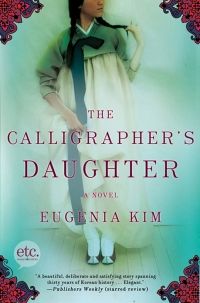 The Calligrapher’s Daughter by Eugenia KimSet in Japan-occupied Korea, the story follows Najin, a young woman whose father follows traditional values but whose mother does not. The father wants Najin to marry, but the mother refuses. Instead, she sends Najin to the royal court to learn alongside princesses. There, Najin eventually becomes a teacher and meets the man of her dreams. As the country descends into war, however, her life is shattered as she gets separated from her husband. |
 Sonju by Wondra ChangThe story is set in postwar Korea and follows a woman who must make a difficult decision. Sonju falls in love with her best friend, and the two plan to marry. Unlike other women at the time, Sonju has liberated ideals and doesn’t conform to society’s expectations of her as a woman. However, her parents discover this and force her to marry a wealthy countryman for whom she has no romantic connection. Having no choice left, she uproots herself and moves to a remote province. As the Korean War erupts, Sonju may have a second chance at romance. |
 Can’t I Go Instead by Lee Geum-yi, translated by An SeonjaeThe story is set in Japan-occupied Korea and follows the lives of two women of different social classes. Sunam, a poor girl, is bought into the family as a servant by Chaeryeong, the daughter of a wealthy man in Korea. As they grow older, Chaeryeong develops feelings for a man who actively supports Korean independence and participates in protests. As a result, she’s also interrogated. With their futures in jeopardy, Chaeryeong’s father requests that Sunam assume her daughter’s identity, but she instead becomes a comfort woman. Meanwhile, Chaeryeong changes her name, marries a Japanese man, and flees to the United States. As the Japanese leave Korea and the country rebuilds, the two women attempt to reclaim their past lives. |
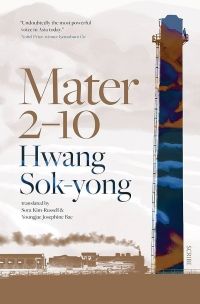 Mater 2-10 by Hwang Sok-yong, translated by Sora Kim-Russell and Youngjae Josephine BaeRelevant and timely, the story focuses on labor exploitation and the fight for workers’ rights. Set in Korea, the saga follows Jino as he protests against a factory that abruptly closes to relocate its headquarters. As Jino continues to protest for days, the story flashes back to the Japanese period, when many of his ancestors, who worked as rail workers for the Japanese, also did the same thing. |
 Endless Blue Sky by Hyoseok Lee, translated by Steven D. CapenerThe novel, which takes place in colonial Korea in the 1940s, follows Cheon as he travels to Manchuria in an attempt to convince a symphony orchestra to perform in Seoul. He meets the Russian dancer Nadia there. The book has some romantic elements as their relationship is complicated by two women, Danyeong and Miryeo, who both pine for Cheon. Written as a serialized newspaper series in the 1940s, the book depicts how people in that era function in relationships, as well as the expectations in building a family. |
 Everlasting Empire by In-hwa Yi, translated by Young-nan YuThe novel is presented as a true story or a historical account of a murder that occurred in a palace during the Joseon Dynasty around the 1800s. It provides a glimpse into the thorny court politics and the scheming that occurs when royals seek to hold onto power. As they investigate the murder, they discover that the culprit is living within the palace itself. |
 Silver Stallion by Ahn JunghyoContent warning: sexual assault The story revolves around mother and son, Ollye and Mansik, and is set during the Korean War in a remote village that seems largely unaffected by the war. Then, peace is shattered when the UN army establishes a base camp near the village. Some of these men sexually abuse Ollye, making her a disgrace to the entire community. This has an impact on her son, who is shunned by his peers. In many countries, many UN peacekeepers have been accused of sexual assault. |
 8 Lives of a Century-Old Trickster by Mirinae LeeAn elderly woman in South Korea recounts her nearly century-long life experiences, beginning with the early days of Japanese occupation, ending with the Korean War, and continuing to the present. Throughout her life, she became a spy, a comfort woman, a mother, and everything else. Each of these unique experiences is divided into eight stories that provide perspective and a brief history of Korea as seen through the eyes of a woman. |
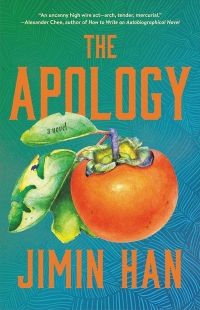 The Apology by Jimin HanThe family saga follows Jeonga, a 105-year-old woman who must make amends and issue “the apology” to her own family. At the beginning of the story, she receives a letter from the U.S. requiring her to travel there. She dies along the way, however. Jeonga has many epiphanies about what she did while in limbo. The story flashes back to the Korean War, recounting her tense relationship with her sisters, one of whom ran away and eloped with a man to North Korea, never to be seen again. Another is when she sent her son’s illegitimate child and the mother to the U.S. Jeonga has many regrets that she must apologize to move on in the afterlife. |
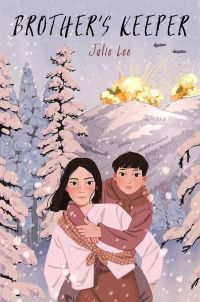 Brother’s Keeper by Julie LeeThe book follows 12-year-old Sora and eight-year-old Youngsoo in 1950s Korea when the Japanese have left the country. That brief respite is fleeting, however. The Korean War looms, with North and South Korea at war with each other. Civilians, like Sora and Youngsoo, are caught up in the conflict. When the city is bombed, the siblings are separated from their parents. To survive, they must cross the border into South Korea and, hopefully, find their way to their parents in Busan, where they will be staying. |
 If You Leave Me by Crystal Hana KimThe story follows 16-year-old Haemi during the Korean War in the 1950s. She is friends with Kyungwhan, but it’s clear that they have feelings for each other. However, Haemi meets Jisoo, Kyungwhan’s wealthy cousin. At the time, Haemi must decide which boy to marry. She must choose between marrying the love of her life and marrying the one who lifts her out of poverty. |
 The Hundred Choices Department Store by Ginger ParkThe story is set in North Korea during World War II and follows 13-year-old Miyook. Her family owns the Hundred Choices Department Store, which caters to wealthy Japanese rather than Koreans. With their business, her family has some privileges that other Koreans don’t have. Things begin to fall apart, however, when the Russians arrive and the war resumes. They destroy the city and set fire to many buildings, including the family business. Miyook’s family must flee. |
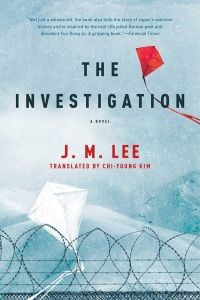 The Investigation by J. M. Lee, translated by Chi-Young KimThe story is based on the life of Korean poet Yun Dong-ju and is set during World War II when the Japanese took over Korea. It all starts when young guard Watanabe investigates the murder of his fellow guard Sugiyama at Fukuoka Prison. Someone murdered the guard, and Watanabe is tasked to find out who the culprit is. Sugiyama is a known torturer of prisoners, but as Watanabe delves further, he discovers that not everything is as it appears. |
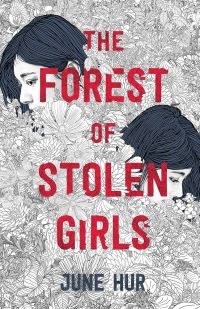 The Forest of Stolen Girls by June HurSet in 1426 during the Joseon Dynasty in Korea, this YA fantasy follows two sisters, Hwani and Maeyol, as they reunite to find their missing father. Their father was investigating a recent mystery of missing girls in a forest, which the two sisters had been a part of years before. They were discovered unconscious in a forest, their memories of the event wiped out. The two sisters’ relationship has since soured. But now, they’ve come together to find their father and solve the mystery once and for all. |
Can’t get enough of Korean Wave? Here are more books by Korean authors, including Korean romance novels for K-pop and K-drama fans and books for fans of historical K-dramas.
Copyright
© Book Riot
